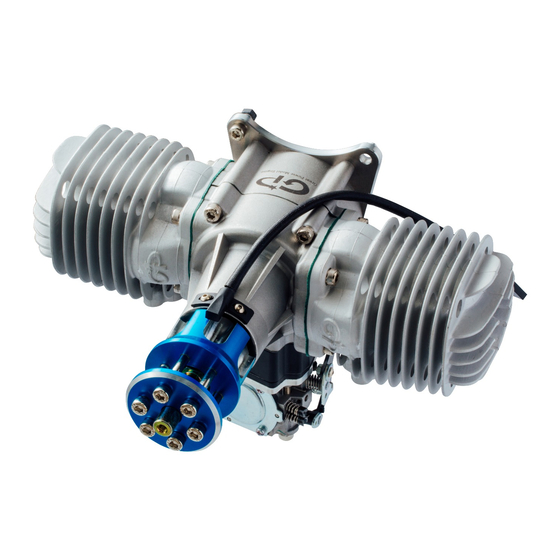Great Power Engine GP-123 소유자 매뉴얼 - 페이지 4
{카테고리_이름} Great Power Engine GP-123에 대한 소유자 매뉴얼을 온라인으로 검색하거나 PDF를 다운로드하세요. Great Power Engine GP-123 11 페이지.

GP-123 is designed for a power maximum of 8900 RPM. We recommend that you do not use
propellers that turn the engine on the ground at more than 7000 RPM. Do not forget that the
balance of your propeller is absolutely critical to the health of your engine.
※ Fuel and Oil Mix ※
Always use 40 to 50 volume units of unleaded 89~93 octane fuel mixed with 1 unit of synthetic
oil (40~50: 1). We recommend Red-line Two Stroke Racing Oil and Motul 710. These oils are
easy to find at most motorcycle stores. Oil used in cheap garden appliances and synthetic oils
are not intended for methanol model machines and must not be used. Any damage resulting
from the use of low quality fuel is not the responsibility of GP Engine. Do not use mixed fuel
that is more than 90 days old.
※ Engine Installation ※
Screw: You can mount the engine directly to the firewall. We recommend a M5 screw for GP-
61, M6 for GP-123, GP-88 andGP-176. The firewall should be stiff enough to prevent engine
vibrations. Use high grade 5 mm or 6 mm with washers and locknuts in the rear of the firewall.
Make sure your firewall is structurally sound.
Servo: We recommend a high quality servo for the throttle, as it ensures accurate and reliable
throttle operation. We also recommend a high quality servo linkage. Do not use all metallic
servo linkages, as this could cause radio interference.
Fuel Tank: We recommend a 450cc-500cc fuel tank for GP-61, a 800cc-1000cc fuel tank for
GP-123 & GP-88 models, and an approximately 1500cc one for GP-176. The tank must be
vented, and the vent should be routed to the outside of the plane, preferably at the bottom of the
cowl.
Engine Cooling: Sufficient air circulation under the cowl must be ensured, as cooling is
important for the engine's performance and longevity. To cool the engine, an appropriately sized
air intake is required. The exhaust air outlet should be 3 times larger than the intake at the bottom
rear of the cowl for the hot air to exhaust. Make sure cool air can go through the cylinder fins
and does not bypass them and rake an easy route to the exit. It is better to build baffles, as this
3
